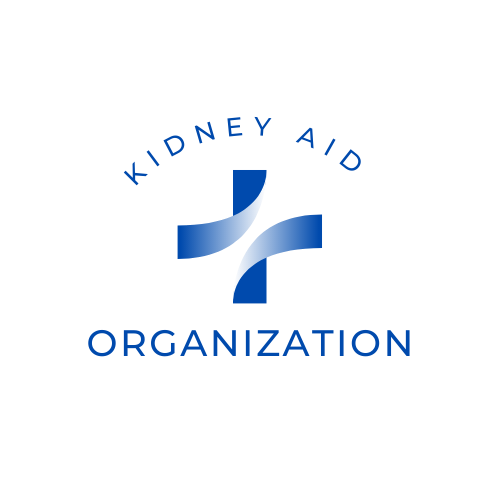Chronic Kidney Disease (CKD) is a progressive condition affecting millions worldwide, often leading to serious health complications if not managed effectively. The rise of telemedicine and digital health solutions has paved the way for innovative approaches to healthcare, including robust virtual chronic kidney disease management programs. These programs leverage technology to provide comprehensive, personalized care, empowering patients and improving outcomes from the comfort of their homes.
This in-depth guide will explore the facets of virtual CKD management programs, their benefits, key components, and what to consider when choosing one.
What is a Virtual Chronic Kidney Disease Management Program?
A virtual chronic kidney disease management program is a healthcare model that utilizes connected health technologies to deliver comprehensive and continuous care to CKD patients remotely. Instead of relying solely on in-person clinic visits, these programs integrate various digital tools to monitor patients' health, provide education, facilitate communication with care teams, and manage the progression of the disease. The core idea is to extend the reach of specialized kidney care beyond traditional clinical settings, making it more accessible, convenient, and proactive for individuals living with CKD.Why Virtual CKD Management Matters: The Benefits
Virtual CKD management programs offer a multitude of benefits for both patients and healthcare providers:- Improved Accessibility and Convenience:
- Reduced Travel Burden: Patients, especially those in rural or underserved areas, no longer need to travel long distances for appointments, saving time, money, and reducing physical strain.
- Flexible Scheduling: Virtual appointments can often be scheduled more flexibly, fitting into a patient's daily routine without significant disruption.
- Enhanced Monitoring and Early Intervention:
- Remote Patient Monitoring (RPM): Devices like connected blood pressure cuffs, scales, and glucose meters allow for continuous tracking of vital signs and health data. This real-time data helps care teams detect subtle changes or potential complications early, enabling timely interventions.
- Proactive Care: Instead of reacting to acute issues, virtual programs facilitate a proactive approach, addressing health changes before they escalate into emergencies or hospitalizations.
- Personalized Care and Education:
- Tailored Care Plans: Data collected through RPM and virtual consultations allows for highly personalized care plans that consider individual risk factors, comorbidities (like diabetes and hypertension), and lifestyle.
- Empowered Patients: Through educational content, reminders, and direct communication channels, patients gain a deeper understanding of their condition, medication adherence, and lifestyle modifications, fostering greater self-management.
- Better Care Coordination:
- Seamless Data Sharing: Integrated digital platforms enable seamless data sharing among various healthcare providers involved in a patient's care (nephrologists, primary care physicians, dietitians, pharmacists), ensuring a coordinated and holistic approach.
- Reduced Fragmentation: This interoperability reduces fragmented care, where different specialists might have incomplete pictures of a patient's health.
- Reduced Healthcare Costs:
- Fewer Hospitalizations and ER Visits: By enabling early detection and proactive management, virtual programs can significantly reduce the incidence of avoidable hospitalizations and emergency room visits, leading to cost savings for both patients and the healthcare system.
- Efficient Resource Utilization: Healthcare resources can be utilized more efficiently, focusing on patients who truly require in-person care.
- Improved Patient Outcomes and Quality of Life:
- Slower Disease Progression: Consistent monitoring, personalized interventions, and improved adherence to treatment plans can help slow the progression of CKD.
- Better Symptom Management: Patients often experience better control of symptoms, leading to an improved quality of life.
Key Components of an Effective Virtual CKD Management Program
A robust virtual CKD management program typically includes several interconnected components:- Remote Patient Monitoring (RPM) Devices:
- Blood Pressure Monitors: Essential for managing hypertension, a major contributor to CKD progression.
- Weight Scales: To detect fluid retention, a common issue in CKD.
- Glucose Meters: Crucial for patients with diabetes, a leading cause of CKD.
- Activity Trackers: To encourage and monitor physical activity.
- Other Specialized Devices: Depending on the patient's stage and specific needs, devices for tracking heart rate, oxygen saturation, or even home dialysis parameters may be included.
- Digital Health Platform/Patient Portal:
- Secure Communication: A platform for secure messaging, video consultations, and virtual visits with nephrologists, nurses, dietitians, and other care team members.
- Data Aggregation and Visualization: A centralized system to collect, store, and display all patient-generated health data from RPM devices, lab results, and clinical notes.
- Personalized Dashboards: User-friendly interfaces for both patients and providers to view progress, trends, and relevant health information.
- Appointment Scheduling and Reminders: Automated systems for scheduling virtual appointments and sending reminders for medications, tests, and lifestyle activities.
- Personalized Care Team:
- Nephrologists: Specialists guiding overall treatment plans, interpreting data, and making critical medical decisions.
- Registered Nurses (RNs) / Care Managers: Often lead the day-to-day patient engagement, monitor data, provide education, answer questions, and coordinate care.
- Registered Dietitians (RDs): Crucial for guiding patients on kidney-friendly nutrition, which is vital for managing CKD progression and symptoms.
- Pharmacists: To ensure medication adherence, manage drug interactions, and provide medication counseling.
- Social Workers/Psychologists: To address the psychosocial aspects of living with CKD, including mental health, financial concerns, and support systems.
- Educational Content and Resources:
- Disease-Specific Information: Comprehensive materials about CKD stages, causes, symptoms, and potential complications.
- Diet and Nutrition Guides: Tailored information on kidney-friendly diets, fluid intake, and managing electrolytes.
- Medication Management: Clear instructions on medications, their purpose, side effects, and adherence strategies.
- Lifestyle Modification Advice: Guidance on exercise, smoking cessation, stress management, and other healthy habits.
- Preparation for Advanced Stages: Resources for patients nearing dialysis or considering kidney transplant options.
- Predictive Analytics and Risk Stratification:
- Advanced algorithms that analyze patient data to identify individuals at higher risk of disease progression, complications, or hospitalizations. This allows care teams to prioritize interventions for those who need them most.
- Interoperability with Existing Systems:
- Seamless integration with Electronic Health Records (EHRs), lab systems, and pharmacy systems to ensure a complete and up-to-date patient record for all care providers.
How to Choose the Right Virtual CKD Management Program
Selecting the ideal virtual CKD management program requires careful consideration:- Accreditation and Provider Credentials:
- Ensure the program is offered by reputable healthcare organizations or technology providers with experienced, board-certified nephrologists and a qualified care team.
- Check for any relevant accreditations or certifications that speak to the quality of care.
- Technological Infrastructure:
- Ease of Use: Is the platform user-friendly for both patients and their caregivers?
- Device Compatibility: Are the RPM devices easy to set up and use, and do they seamlessly integrate with the platform?
- Security and Privacy (HIPAA Compliance): Is patient data protected and compliant with all relevant privacy regulations?
- Reliability: Does the platform offer stable connectivity and minimal technical glitches?
- Scope of Services and Personalization:
- Comprehensive Care: Does the program address all aspects of CKD management, including medication, diet, lifestyle, and psychosocial support?
- Stage-Specific Care: Can the program adapt its interventions based on the patient's specific CKD stage?
- Comorbidity Management: Does it effectively manage common comorbidities like diabetes and hypertension?
- Personalized Plan: How much customization is available for individual patient needs and preferences?
- Care Team Accessibility and Responsiveness:
- Communication Channels: How easily can patients communicate with their care team (messaging, video calls, phone)?
- Response Times: What are the expected response times for inquiries or alerts?
- Multilingual Support: Is support available in multiple languages if needed?
- Patient Engagement and Education:
- Interactive Tools: Does the program offer engaging educational content, interactive tools, and reminders to promote self-management?
- Patient Feedback: Is there a mechanism for patients to provide feedback and contribute to their care plan?
- Cost and Insurance Coverage:
- Understand the program's costs, including monthly fees, device costs, and any potential hidden charges.
- Verify if the program is covered by your health insurance plan. Many remote patient monitoring and telehealth services are increasingly reimbursed.
- Reviews and Success Stories:
- Look for testimonials, case studies, or success stories from other patients who have used the program.
- Consider independent reviews and ratings if available.
Success Stories in Virtual CKD Management
The adoption of virtual CKD management programs is growing, and numerous examples highlight their positive impact:- Reduced Hospitalizations: Programs utilizing RPM have shown significant reductions in 30-day hospitalization rates for CKD patients, demonstrating the power of early intervention.
- Improved Blood Pressure Control: Consistent remote monitoring and proactive adjustments to medication and lifestyle have led to better blood pressure control, a critical factor in slowing CKD progression.
- Enhanced Patient Adherence: Automated reminders, personalized education, and easy communication with care teams have boosted medication adherence and dietary compliance.
- Increased Patient Satisfaction: Patients often report higher satisfaction due to the convenience, personalized attention, and sense of empowerment gained from these programs.
- Bridging the Gap in Rural Care: Virtual programs are particularly impactful in rural and underserved communities, where access to specialized nephrology care might be limited.
Are you tired of living under the shadow of kidney disease? Are you yearning for a life free from the shackles of dialysis, kidney failure, and the looming threat of kidney transplants? If so, you're in the right place at the right time. Imagine waking up every morning with boundless energy, feeling rejuvenated and ready to take on the day. Envision a life where your kidneys are functioning optimally, and you no longer dread the burdensome routines of dialysis sessions. The Kidney Disease Solution Program is here to turn that vision into reality for you.


